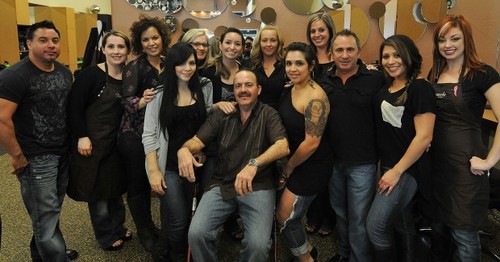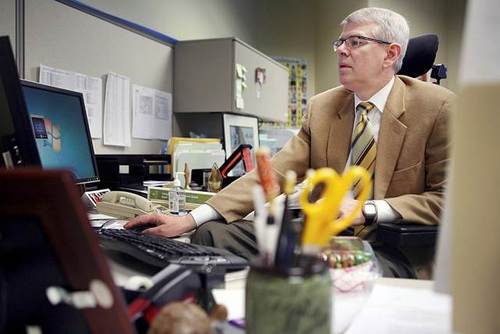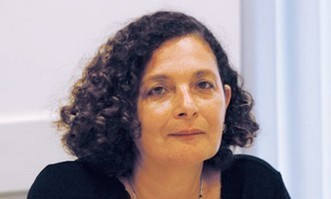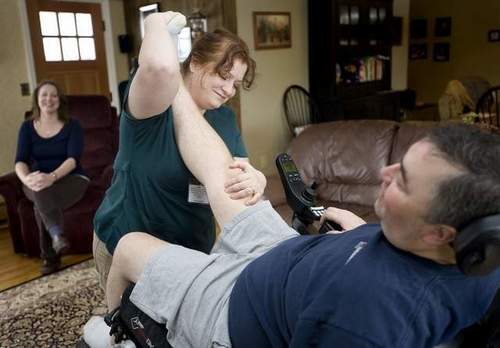Archive for March, 2012
10
Mar
Posted by alsresearchnews in In Memoriam. Tagged: ALS, Fred Pirkle, Lou Gehrig's Disease. Leave a comment
Via Scoop.it – ALS Lou Gehrig’s Disease
 Fred Pirkle’s inventive mind was still cranking out ideas for new creations even as the rest of his body had virtually shut down due to a fast-moving form of amyotrophic lateral sclerosis, more familiarly known as Lou Gehrig’s disease. Lately, those efforts were focused on ways to help those like him whose motion was limited by disease or stroke. On Friday, March 9, three weeks after Mr. Pirkle turned 66, the founder of Therm-Omega-Tech Inc., a manufacturer of temperature-control valves in Warminster, died at his home in the township. At the ALS Association, Greater Philadelphia Chapter, executive director Jim Pinciotti praised Mr. Pirkle Friday for working “diligently to invent items to help himself and others living with this devastating neurodegenerative disease. . . . He was and remains an inspiration to us all.”
Fred Pirkle’s inventive mind was still cranking out ideas for new creations even as the rest of his body had virtually shut down due to a fast-moving form of amyotrophic lateral sclerosis, more familiarly known as Lou Gehrig’s disease. Lately, those efforts were focused on ways to help those like him whose motion was limited by disease or stroke. On Friday, March 9, three weeks after Mr. Pirkle turned 66, the founder of Therm-Omega-Tech Inc., a manufacturer of temperature-control valves in Warminster, died at his home in the township. At the ALS Association, Greater Philadelphia Chapter, executive director Jim Pinciotti praised Mr. Pirkle Friday for working “diligently to invent items to help himself and others living with this devastating neurodegenerative disease. . . . He was and remains an inspiration to us all.”
Via www.philly.com
9
Mar
Posted by alsresearchnews in ALS Fundraising. Tagged: ALS, Fundraising, Lou Gehrig's Disease. Leave a comment
Via Scoop.it – ALS Lou Gehrig’s Disease
 The 610 Stompers — ordinary men with extraordinary moves — have become a parade favorite here in New Orleans and in the Macy’s Day Parade in New York.And now they are showing you how to become a Virtual 610 Stomper. Chief dancing officer Brett “Slab” Patron demonstrates some of the group’s moves for people who want to be a part of the Virtual 610 Stomper fundraiser to benefit ALS and Team Gleason. “We would love to raise $100,000, but this is our first year,” said Patron said. “And we are just trying to get as many people involved as possible.” Steve Gleason is the former Saints special team standout who suffers from ALS, or Lou Gehrig’s Disease, the terminal disease that damages nerves controlling voluntary muscle movement. He organized Team Gleason to raise public awareness about ALS.
The 610 Stompers — ordinary men with extraordinary moves — have become a parade favorite here in New Orleans and in the Macy’s Day Parade in New York.And now they are showing you how to become a Virtual 610 Stomper. Chief dancing officer Brett “Slab” Patron demonstrates some of the group’s moves for people who want to be a part of the Virtual 610 Stomper fundraiser to benefit ALS and Team Gleason. “We would love to raise $100,000, but this is our first year,” said Patron said. “And we are just trying to get as many people involved as possible.” Steve Gleason is the former Saints special team standout who suffers from ALS, or Lou Gehrig’s Disease, the terminal disease that damages nerves controlling voluntary muscle movement. He organized Team Gleason to raise public awareness about ALS.
Via www.wwltv.com
9
Mar
Posted by alsresearchnews in ALS Fundraising. Tagged: ALS, Fundraising, Lou Gehrig's Disease. Leave a comment
Via Scoop.it – ALS Lou Gehrig’s Disease
 HANFORD — Local hair stylist Joe Babin used to go hunting for animals like deer and other big game as a pastime with friends, but now he’s hunting for something to save his life — a cure for Lou Gehrig’s disease. “I know the odds, I don’t need to be reminded of that,” Babin said. “But I am not letting that cloud my mind. I am coming at this, guns blazing. I’m going to fight this thing during every waking moment of my life.” Babin won’t be alone in his fight. Ever since he was officially diagnosed in December, family and friends have shown him unbelievable amounts of support. Now, his co-workers at Panache Hair Salon and various other businesses have partnered to hold a special dinner and dance fundraiser at the Hanford Fraternal Hall on Saturday to help pay for any living or medical expenses while Babin pursues a treatment for the disease.
HANFORD — Local hair stylist Joe Babin used to go hunting for animals like deer and other big game as a pastime with friends, but now he’s hunting for something to save his life — a cure for Lou Gehrig’s disease. “I know the odds, I don’t need to be reminded of that,” Babin said. “But I am not letting that cloud my mind. I am coming at this, guns blazing. I’m going to fight this thing during every waking moment of my life.” Babin won’t be alone in his fight. Ever since he was officially diagnosed in December, family and friends have shown him unbelievable amounts of support. Now, his co-workers at Panache Hair Salon and various other businesses have partnered to hold a special dinner and dance fundraiser at the Hanford Fraternal Hall on Saturday to help pay for any living or medical expenses while Babin pursues a treatment for the disease.
Via www.hanfordsentinel.com
8
Mar
Posted by alsresearchnews in ALS Research - Drugs. Tagged: ALS, CK-2017357, Cytokinetics, Lou Gehrig's Disease, Resarch. Leave a comment
Via Scoop.it – ALS Lou Gehrig’s Disease
 In people with ALS, the diaphragm and intercostal muscles gradually weaken often leading to respiratory distress and failure. In hopes to keep these muscles moving, Case Western University School of Medicine surgeon Raymond Onders MD FACS introduced a device, now approved by the FDA for people with ALS with breathing difficulties, called the NeuRX DPS which may boost the stamina of these muscles. But researchers from San Francisco’s Cytokinetics Inc. think that they might have a simpler solution: the experimental drug CK-2017357 (CK-357). Introduced in 2008, CK-357 might increase the strength of certain skeletal muscles including those needed for breathing. Now, Cytokinetics scientists reveal just how CK-357 works: the drug promises to make the most of weakening neuromuscular junctions by helping fast twitch fibers in skeletal muscles hold on to calcium, enabling more powerful contractions. This so-called fast skeletal muscle is needed in part, to maintain a healthy breathing rate. The Cytokinetics’ team anticipates that the drug could be beneficial in the treatment of number of neuromuscular diseases including ALS. Physicians are currently evaluating the safety and tolerability of multiple doses of CK-357 in people with ALS. The multi-institutional US team, led by State University of New York neurologist Jeremy Shefner MD PhD, are also checking for improvements in patients’ muscle function including breathing ability. The two 14 day placebo-controlled phase II clinical trials are expected to be completed by the end of March 2012. About 48 ALS patients are participating.
In people with ALS, the diaphragm and intercostal muscles gradually weaken often leading to respiratory distress and failure. In hopes to keep these muscles moving, Case Western University School of Medicine surgeon Raymond Onders MD FACS introduced a device, now approved by the FDA for people with ALS with breathing difficulties, called the NeuRX DPS which may boost the stamina of these muscles. But researchers from San Francisco’s Cytokinetics Inc. think that they might have a simpler solution: the experimental drug CK-2017357 (CK-357). Introduced in 2008, CK-357 might increase the strength of certain skeletal muscles including those needed for breathing. Now, Cytokinetics scientists reveal just how CK-357 works: the drug promises to make the most of weakening neuromuscular junctions by helping fast twitch fibers in skeletal muscles hold on to calcium, enabling more powerful contractions. This so-called fast skeletal muscle is needed in part, to maintain a healthy breathing rate. The Cytokinetics’ team anticipates that the drug could be beneficial in the treatment of number of neuromuscular diseases including ALS. Physicians are currently evaluating the safety and tolerability of multiple doses of CK-357 in people with ALS. The multi-institutional US team, led by State University of New York neurologist Jeremy Shefner MD PhD, are also checking for improvements in patients’ muscle function including breathing ability. The two 14 day placebo-controlled phase II clinical trials are expected to be completed by the end of March 2012. About 48 ALS patients are participating.
Via blogs.als.net
7
Mar
Posted by alsresearchnews in ALS Awareness. Tagged: ALS, Awareness, Bruce Kramer, Lou Gehrig's Disease. Leave a comment
Via Scoop.it – ALS Lou Gehrig’s Disease

This is the third report following St. Thomas professor Bruce Kramer as he copes with life after being diagnosed with ALS, also known as Lou Gehrig’s Disease. By Cathy Wurzer, Minnesota Public Radio
Via minnesota.publicradio.org
7
Mar
Posted by alsresearchnews in ALS Research - Stem Cells. Tagged: ALS, Lou Gehrig's Disease, Neuralstem, Stem Cells. Leave a comment
Via Scoop.it – ALS Lou Gehrig’s Disease

Neuralstem, Inc. announced that the second patient to receive stem cells in the cervical (upper back) region of the spine was dosed on February 29th in the ongoing Phase I trial of its spinal cord neural stem cells in amyotrophic lateral sclerosis (ALS or Lou Gehrig’s disease). Patient 14 is also the first woman to be treated in the trial. Stem cell transplantation into the cervical region of the spinal cord could support breathing, a key function that is lost as ALS progresses. The first twelve patients in the trial received stem cell transplants in the lumbar (lower back) region of the spinal cord only. “This cohort of patients represents another first for our trial, as we transplant cells directly into the gray matter of the spinal cord in the cervical region,” said Karl Johe, PhD, Neuralstem’s Chairman and Chief Scientific Officer. “We are delighted that the surgeries are progressing in a region that could have a significant impact on the quality of life for ALS patients. With the safe transplantation of our 14th patient, we are well are on our way to demonstrating the safety of our novel procedure.” The Phase I trial to assess the safety of Neuralstem’s spinal cord neural stem cells and intraspinal transplantation method in ALS patients has been underway since January 2010. The trial is designed to enroll up to 18 patients. The first 12 patients were each transplanted in the lumbar (lower back) region of the spine, beginning with non-ambulatory and advancing to ambulatory cohorts. The trial has now progressed to the final six patients. Each is in the cervical (upper back) region of the spine. The entire 18-patient trial concludes six months after the final surgery.
Via phoenix.corporate-ir.net
7
Mar
Posted by alsresearchnews in ALS Research - Drugs. Tagged: ALS, Cytokinetics, Lou Gehrig's Disease, Resarch. Leave a comment
Via Scoop.it – ALS Lou Gehrig’s Disease
 European regulators granted “orphan” status to a potential treatment for Lou Gehrig’s disease developed by South San Francisco’s Cytokinetics Inc. CK-2017357, which already has orphan drug designation in the United States, activates a muscle protein, called troponin, that could improve ALS patients’ ability to breathe as well as walk.
European regulators granted “orphan” status to a potential treatment for Lou Gehrig’s disease developed by South San Francisco’s Cytokinetics Inc. CK-2017357, which already has orphan drug designation in the United States, activates a muscle protein, called troponin, that could improve ALS patients’ ability to breathe as well as walk.
Via www.bizjournals.com
5
Mar
Posted by alsresearchnews in ALS Research - Drugs. Tagged: ALS, CK-2017357, Cytokinetics, Lou Gehrig's Disease, Resarch. Leave a comment
Via Scoop.it – ALS Lou Gehrig’s Disease
 Cytokinetics, Incorporated announced today the publication of preclinical research regarding the activation of the troponin complex of fast skeletal muscle by its drug candidate CK-2017357 and the potential therapeutic role that this novel mechanism may play for patients with neuromuscular disorders. This publication in the March 2012 issue of the journal Nature Medicine reveals the mechanism of action for CK-2017357 and the scientific rationale for directly modulating fast skeletal muscle contractility as an innovative therapeutic strategy for improving physical activity in diseases in which neuromuscular function is compromised. “We are honored to have Cytokinetics’ novel scientific research into direct modulators of the skeletal muscle contractile apparatus published in this prestigious journal,” stated Fady I. Malik, MD, PhD, FACC, Cytokinetics’ Vice President of Biology and Therapeutics and senior author of this report. “This publication summarizes pioneering work performed by our dedicated research team that has supported the progression of CK-2017357 into Phase II clinical development for the potential treatment of patients with neuromuscular diseases.” The publication, titled “Activation of Fast Skeletal Muscle Troponin as a Potential Therapeutic Approach for Treating Neuromuscular Diseases,” discusses the potential clinical role for therapies that directly activate troponin in fast skeletal muscle. CK-2017357 is currently the subject of a Phase II clinical development program and has been granted orphan-drug designation by the U.S. Food and Drug Administration for the potential treatment of ALS, a debilitating disease of neuromuscular impairment.
Cytokinetics, Incorporated announced today the publication of preclinical research regarding the activation of the troponin complex of fast skeletal muscle by its drug candidate CK-2017357 and the potential therapeutic role that this novel mechanism may play for patients with neuromuscular disorders. This publication in the March 2012 issue of the journal Nature Medicine reveals the mechanism of action for CK-2017357 and the scientific rationale for directly modulating fast skeletal muscle contractility as an innovative therapeutic strategy for improving physical activity in diseases in which neuromuscular function is compromised. “We are honored to have Cytokinetics’ novel scientific research into direct modulators of the skeletal muscle contractile apparatus published in this prestigious journal,” stated Fady I. Malik, MD, PhD, FACC, Cytokinetics’ Vice President of Biology and Therapeutics and senior author of this report. “This publication summarizes pioneering work performed by our dedicated research team that has supported the progression of CK-2017357 into Phase II clinical development for the potential treatment of patients with neuromuscular diseases.” The publication, titled “Activation of Fast Skeletal Muscle Troponin as a Potential Therapeutic Approach for Treating Neuromuscular Diseases,” discusses the potential clinical role for therapies that directly activate troponin in fast skeletal muscle. CK-2017357 is currently the subject of a Phase II clinical development program and has been granted orphan-drug designation by the U.S. Food and Drug Administration for the potential treatment of ALS, a debilitating disease of neuromuscular impairment.
Via www.cytokinetics.com
5
Mar
Posted by alsresearchnews in ALS Research - Other. Tagged: ALS, Lou Gehrig's Disease, Resarch, telomerase. Leave a comment
Via Scoop.it – ALS Lou Gehrig’s Disease
 A Ben-Gurion University researcher and her colleagues have identified a chemical compound that may lead to prolonged lifespans for patients with Amytotrophic lateral sclerosis (ALS) and other neurodegenerative diseases. Prof. Esther Priel and her team published an article in the February edition of EMBO Molecular Medicine Journal, in which they demonstrate how their compound can induce an increased production of the enzyme telomerase in the bodies of laboratory mice and in human stem cells. The increased amount of telomerase slows the progression of ALS, also known as Lou Gehrig’s disease. It will take at least 10 years to develop the compounds into a drug, she predicted. In the meantime, however, the team is producing positive results in animals, she said. While ALS remains a rare disease in Israel and throughout the world, Priel stressed just how debilitating it becomes to those who have it. “There are not a lot of people, fortunately, who have this disease, but it’s a terrible disease because they become paralyzed, and the head is working very well, so they are aware of what is going on with their body,” she said. “It is a devastating disease and there is no cure for it.”
A Ben-Gurion University researcher and her colleagues have identified a chemical compound that may lead to prolonged lifespans for patients with Amytotrophic lateral sclerosis (ALS) and other neurodegenerative diseases. Prof. Esther Priel and her team published an article in the February edition of EMBO Molecular Medicine Journal, in which they demonstrate how their compound can induce an increased production of the enzyme telomerase in the bodies of laboratory mice and in human stem cells. The increased amount of telomerase slows the progression of ALS, also known as Lou Gehrig’s disease. It will take at least 10 years to develop the compounds into a drug, she predicted. In the meantime, however, the team is producing positive results in animals, she said. While ALS remains a rare disease in Israel and throughout the world, Priel stressed just how debilitating it becomes to those who have it. “There are not a lot of people, fortunately, who have this disease, but it’s a terrible disease because they become paralyzed, and the head is working very well, so they are aware of what is going on with their body,” she said. “It is a devastating disease and there is no cure for it.”
Via www.jpost.com
4
Mar
Posted by alsresearchnews in ALS Awareness. Tagged: ALS, Awareness, Lou Gehrig's Disease. Leave a comment
Via Scoop.it – ALS Lou Gehrig’s Disease

The human body doesn’t normally bend in the directions Frank Provost’s body was bending Friday morning.In the sunlit living room of his rural Hinesburg home, Provost worked with Michele Denault-Reynolds, a licensed nursing assistant with the Visiting Nurse Association of Chittenden and Grand Isle Counties, to loosen his muscles that seize up as a result of his amyotrophic lateral sclerosis, or Lou Gehrig’s disease. Provost sat in his motorized wheelchair as the nurse bent his arm over his head. She took his left leg and held it in position for several seconds over the right side of his body to improve his flexibility and reduce the muscular spasticity that makes it hard for Provost to fend for himself. “Trying to make him a pretzel,” his wife, Kim Provost, joked. The Burlington Free Press profiled Frank and Kim Provost a year ago on the eve of a fundraiser their family helped organize to benefit the ALS Therapy Development Institute, a Massachusetts-based nonprofit that’s trying to find a cure for the fatal disease that attacks the brain and spinal cord. A year later, just before the second annual fundraiser tonight in Colchester, that declining muscular flexibility represents the biggest change in Frank Provost’s physical condition.
Via www.burlingtonfreepress.com









